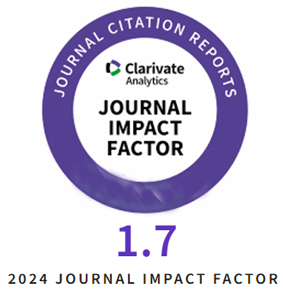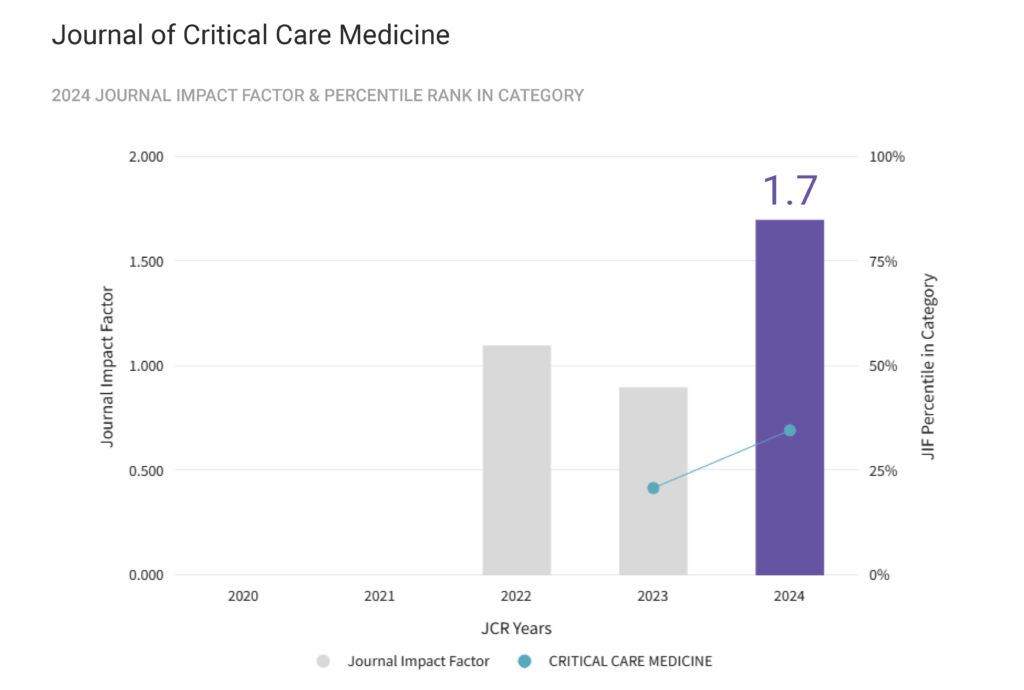Introduction: COVID-19 pneumonia manifests with a wide range of clinical symptoms, from minor flu-like signs to multi-organ failure. Chest computed tomography (CT) is the most effective imaging method for assessing the extent of the pulmonary lesions and correlates with disease severity. Increased workloads during the COVID-19 pandemic led to the development of various artificial intelligence tools to enable quicker diagnoses and quantitative evaluations of the lesions.
Aim of the study: This study aims to analyse the correlation between lung lesions identified on CT scans and the biological inflammatory markers assessed, to establish the survival rate among patients.
Methods: This retrospective study included 120 patients diagnosed with moderate to severe COVID-19 pneumonia who were admitted to the intensive care unit and the internal medicine department between September 2020 and October 2021. Each patient underwent a chest CT scan, which was subsequently analysed by two radiologists and an AI post-processing software. On the same day, blood was collected from the patients to determine inflammatory markers. The markers analysed in this study include the neutrophil-lymphocyte ratio (NLR), monocyte-lymphocyte ratio, platelet-lymphocyte ratio, systemic immune-inflammatory index, systemic inflammation response index, systemic inflammation index, and serum interleukin-6 value.
Results: There were strong and very strong correlations between the derived inflammatory markers, interleukin-6, and the CT severity scores obtained by the AI algorithm (r=0.851, p<0.001 in the case of NLR). Higher values of the inflammatory markers and high lung opacity scores correlated with a decreased survival rate. Crazy paving was also associated with an increased risk of mortality (OR=2.89, p=0.006).
Conclusions: AI-based chest CT analysis plays a crucial role in assessing patients with COVID-19 pneumonia. When combined with inflammatory markers, it provides a reliable and objective method for evaluating COVID-19 pneumonia, enhancing the accuracy of diagnosis.
Tag Archives: inflammatory markers
Predictive Value of Systemic Immune-inflammation Index in Determining Mortality in COVID-19 Patients
Aim: The aim of this study was to evaluate whether systemic immune-inflammation index (SII) could predict mortality in patients with novel coronavirus 2019 (COVID-19) disease.
Methods: This two-center, retrospective study included a total of 191 patients with confirmed diagnosis of COVID-19 via nucleic acid test (NAT). The SII was calculated based on the complete blood parameters (neutrophil × platelet/lymphocyte) during hospitalization. The relationship between the SII and other inflammatory markers and mortality was investigated.
Results: The mortality rate was 18.3%. The mean age was 54.32±17.95 years. The most common symptoms were fever (70.7%) and dry cough (61.3%), while 8 patients (4.2%) were asymptomatic. The most common comorbidities were hypertension (37.7%), diabetes (23.0%), chronic renal failure (14.7%), and heart failure (7.9%) which all significantly increased the mortality rate (p<0.001). There was a highly positive correlation between the SII and polymorphonuclear leukocyte (PNL), neutrophil-to-lymphocyte ratio (NLR), and platelet-to-lymphocyte ratio (PLR) (r=0.754, p<0.001; r=0.812, p<0.001; r=0.841, p<0.001, respectively), while a moderate, positive correlation was found between the SII and C-reactive protein (CRP) (r=0.439, p<0.001). There was a significant correlation between the SII and mortality (U=1,357, p<0.001). The cut-off value of SII was 618.8 (area under the curve=0.751, p<0.001) with 80.0% sensitivity and 61.5% specificity. A cut-off value of >618.8 was associated with a 4.68-fold higher mortality.
Conclusion: Similar to NLR and PLR, the SII is a proinflammatory marker of systemic inflammation and can be effectively used in independent predicting COVID-19 mortality .










